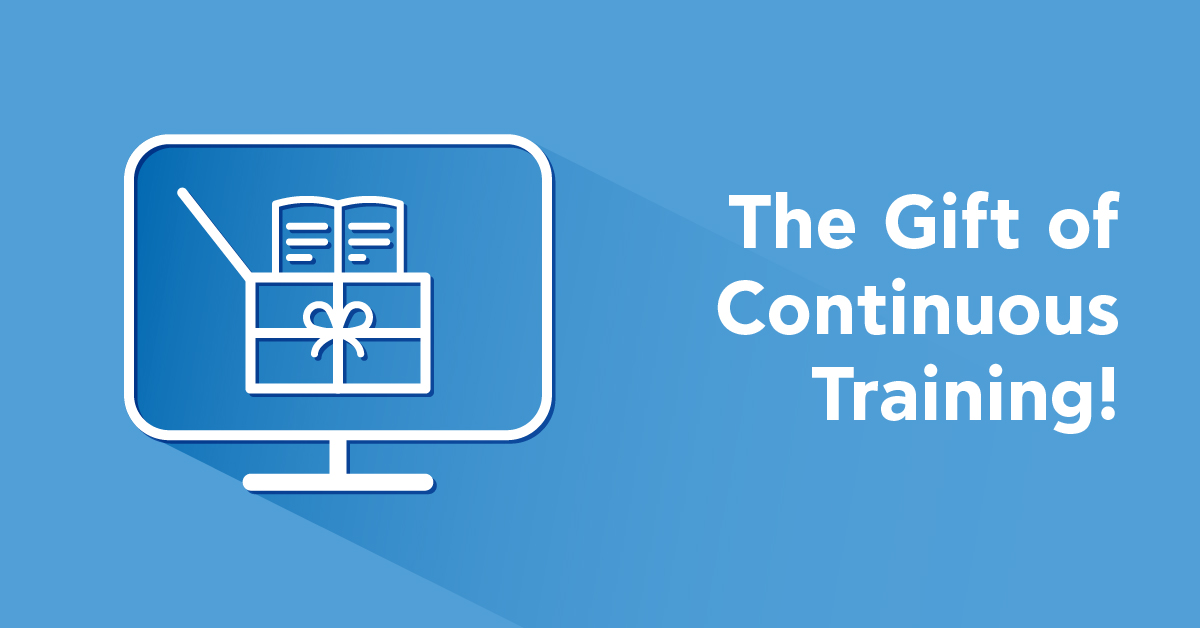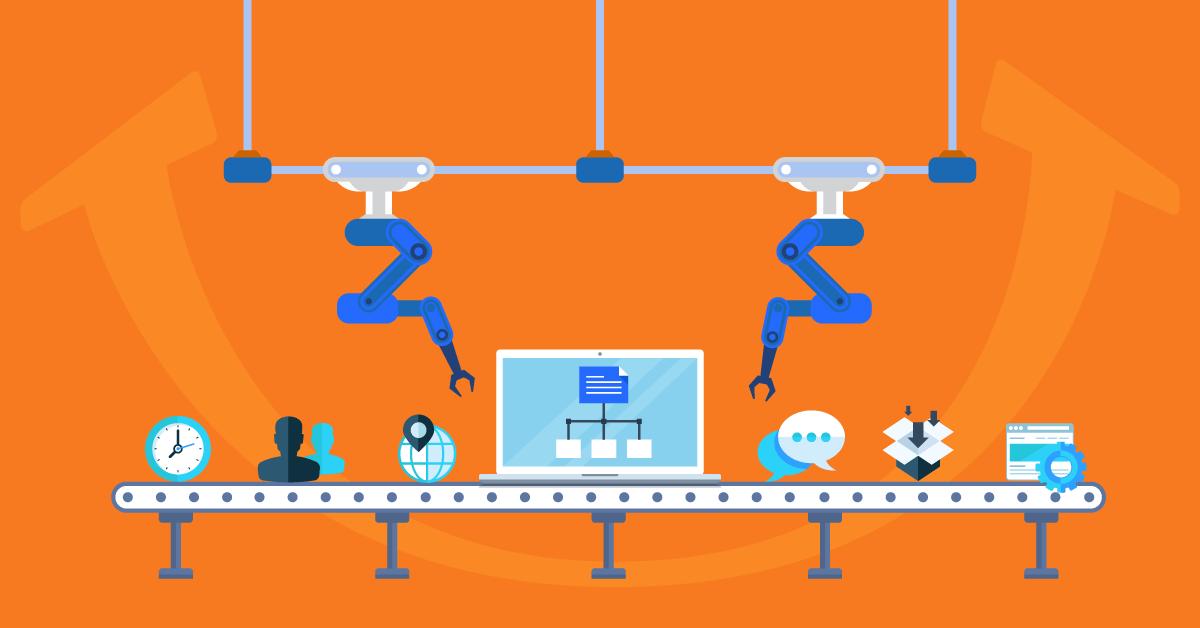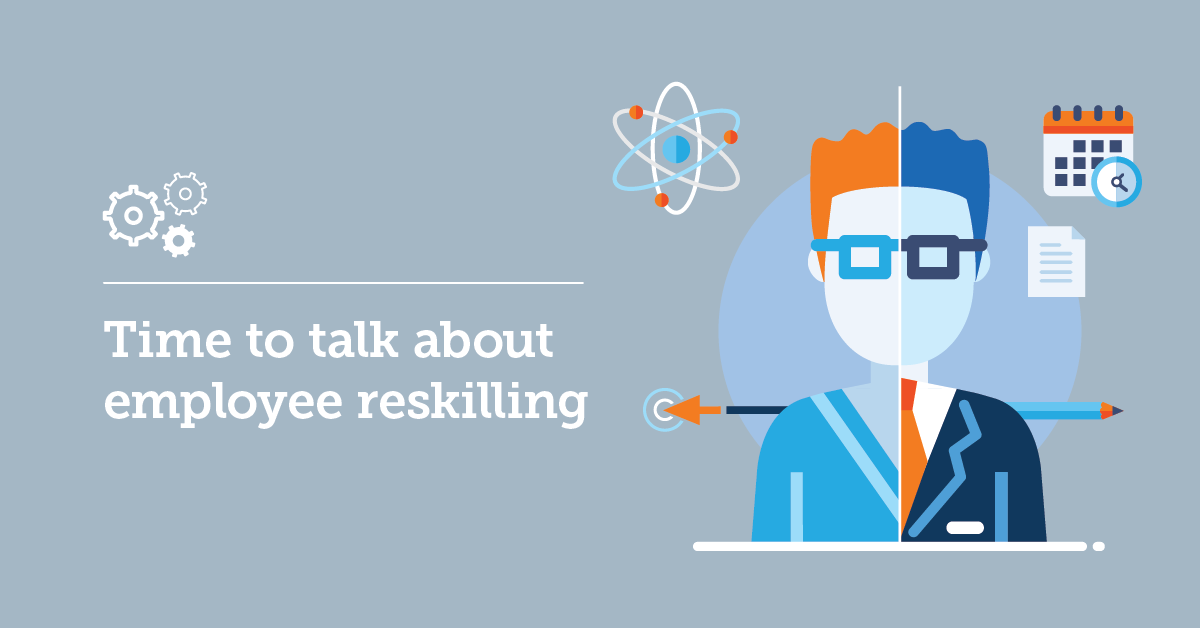Take a minute and think of the first day on your job. Think about the sights, smells, and feelings that you had when you first walked into the office. I bet there was excitement, nerves, and a feeling of “finally, I’m where I need to be. I’m somewhere now.”
That’s a common reaction that people get when they reach that ‘next step’ of their career. Usually, people think that the feeling will last forever. Once you find your ‘niche’ or get that next promotion or pay raise, you won’t need to progress anymore. You won’t need to train anymore. You’ll be done.
Why ongoing training is the key to a satisfied workforce
You must’ve realized by now that this is never the case – no one arrives at their ideal job and then doesn’t need anything else to get by. Even the chief executives at some of the largest companies, who’ve reached the ceiling of what you can achieve in a career, desire something more.
It’s how we’re wired and it makes us human. We’re innovators. We love to progress. We crave growth – be it spiritual, personal, career, intellectual, or whatever else. We love to grow.
That’s why ongoing training for employees is absolutely pivotal in maintaining a happy workforce. The truth is that in reality, most employees would prefer ongoing development and training to a raise or a new company car. It’s not just about material gain, but about feeling good at what you do.
Is ongoing training the same as improving staff performance?
This is a misconception, and the wording is important. It’s crucial to recognize that ‘development’ is different from ‘improvement’. A common mistaken belief is that further education, courses, or other strategies aiming at ‘developing’ your workforce are aimed at ‘improving’ them.
Not the case. It’s not so much about seeing your employees as a tool that needs sharpening, but seeing them as a whole person who wants to do the best they can, and needs support and help to do that.
Overall, we should take a wholly positive view about employees, and people. People generally want to excel. We don’t want to settle for average, and often, at work, we are looking for ways to develop and grow, to do our best. But that doesn’t mean we’re ‘improving’, which suggests we’re not good enough, to begin with.
Ongoing training is about planning, designing, and implementing procedures and actions that help your employees reach their development goals.
Keep your workforce happy with advancement opportunities
Try TalentLMS, the LMS platform that’s easy to use, set up and customize.
So why does ongoing training matter?
It makes staff feel valued
So now we’ve established that we’re ‘developing’ and not ‘improving’, we need to ask why it matters. Well, there’s a bunch of reasons, and many of these are common sense.
Firstly, you’ll have staff who feel good will towards your organization. Take Starbucks for instance, who are offering baristas low-cost college degrees. That’s an opportunity that for many would be impossible without the assistance of their employer.
Fostering a positive relationship and providing for your employees is something that every organization should aim to achieve. While Starbucks is a pretty extreme example, even a small recognition, or token piece of assistance can go a long way to creating a really positive relationship between you and your employees.
It makes your organization more efficient
Another key point in offering your staff ongoing professional development is that it helps reduce staff turnover. According to IBM, within three years every company loses on average a massive 41% of its staff. It doesn’t take an expert to work out that this incurs huge costs in HR, staffing, and low productivity. Not to mention long induction programs that put a strain on your company and your existing employees.
So those are in a nutshell, the reasons why ongoing training matters. We could go on and on about the risks of having a high staff turnover, a dissatisfied workforce, and overall not doing enough to help develop and grow your employees, but we’d be here all day. The question then is exactly why having staff receive ongoing training leads to improvements in work satisfaction.
How does continuous training lead to job satisfaction?
People who start a job without adequate training will almost always experience stress and anxiety. Not feeling confident in what you should be doing at work is a really distressing experience.
Even if you receive good training at first, it’s important to get regular refresher sessions, because knowledge tends to slip over time. And as our jobs and our working lives change and develop, new protocols, codes of conduct, and ways of doing things are added, so the need for extra training becomes difficult to ignore.
When we’re provided with continuous training to move with the times, stay up-to-date, and feel on top of our game, it shows in our work. We tend to take more pride in what we do.
If you feel that you’re an expert and at the cutting edge of your field, you’ll also tend to express your opinion more, rather than just think ‘the boss knows best, let’s go with their choice.’ The result of this is that your staff are more engaged, happier to speak up, and feel more secure and able to cope with their job. This feeds into overall employee job satisfaction.
If you feel valued and useful, waking up in the morning isn’t such a chore. Even making cold calls suddenly takes on a more important sense of responsibility.
Really, it comes down to valuing your employees
And while money can be a factor, it’s not the factor. While some people want to take on a master’s degree, do extra training, or take on more responsibility so that they can get a nice raise and buy a new car, for many people it’s not that important – even if they don’t realize it yet.
As long as we have our living expenses covered, we find happiness isn’t necessarily in getting more 0’s in our salary, but in feeling valued and doing something that matters. By providing continuous training and helping employees to ‘see the big picture’, you empower them to feel that they matter and that they’re respected and valued.
Maybe it’s an idealistic view, but it’s one born out of real experience and interviews. Places exist with no professional development opportunities and high salaries. While it works in the short term, it leads to workers waiting around just to get paid, not engaging with their work but sticking around for the money.
It’s time that we recognize that people need to feel valued and satisfied to do their best and give 100%. Without a staff training plan, you can’t provide employees with what they need to succeed.
Ultimately, training courses for employees and continuous training opportunities, as well as other professional development opportunities, have a huge effect on your workforce. They lead to greater productivity, more employee happiness, and a better company-employee relationship.
This all feeds into the bigger picture – job satisfaction. When everyone is on the same page at a company, and everyone feels truly emotionally engaged and involved with their work, then great things are achievable. It’s up to you to make it happen.
| Tags: Employee Training,Ongoing Training




